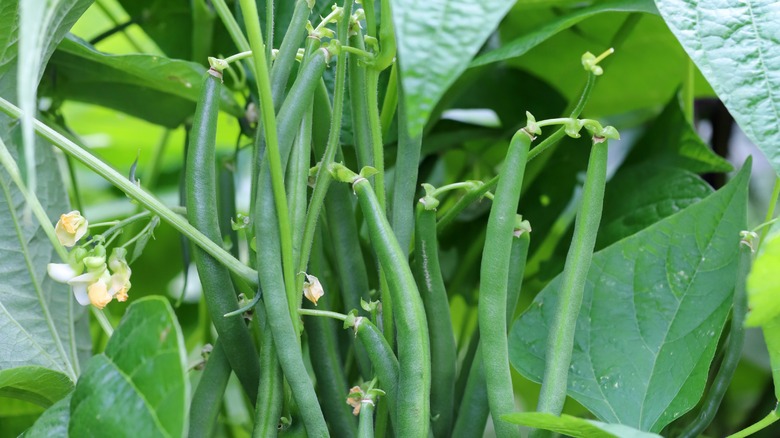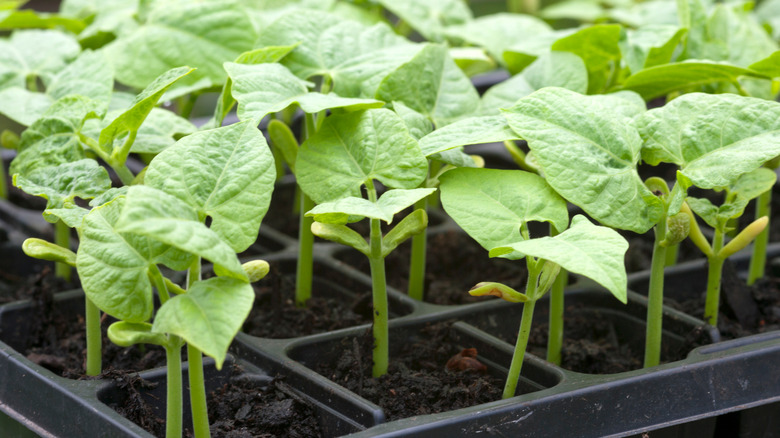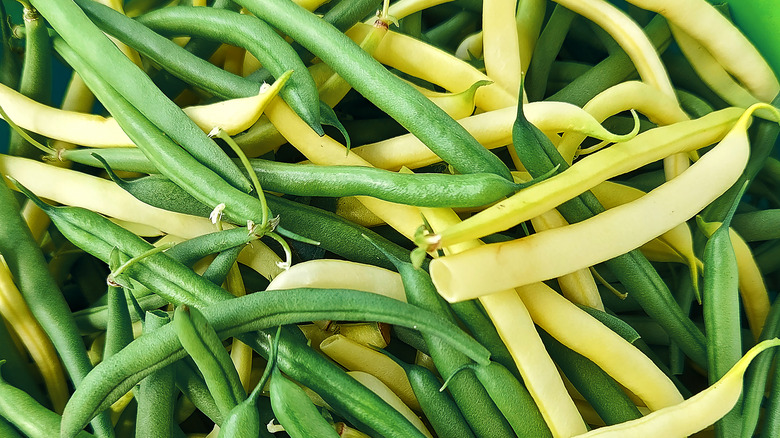Grow Green Beans All Year-Round With These Indoor Gardening Tips
We may receive a commission on purchases made from links.
For those who live in colder climates where the garden is dormant for part of the year, or otherwise in locations that endure extreme heat, the perfect indoor garden can create ideal growing conditions year-round and extend harvest time — no matter the season. Green beans are ideally suited to an indoor gardening setup, and will have you harvesting handfuls that can be cooked for dinner as soon as a month and a half after planting.
To get started, plant beans about an inch deep into moist soil. Make sure that the pot sits within a tray or bowl — something to collect any excess water that runs through, as you will need to water these about twice a week. It's also important to label each pot, because no matter how many times you think you'll remember what you planted where, it's easy to get pots mixed up once the beans start growing.
It's essential to select bush beans when growing indoors, as these will remain relatively compact and won't require trellising like their pole bean cousins. There's no need to worry about the lack of bees inside your house either. Green beans are self pollinating, meaning each flower contains both the male and female parts and can handle fertilization without any assistance. Many times, the flowers even self-pollinate before they open.
Create the right conditions for growing green beans inside
Because green beans require about 8-10 hours of direct sunlight per day, a simple window sill will not be sufficient for growing these inside — especially during winter when light levels are already low. You could take your chances with a skylight or sunroom (if those are available to you), however the best option will be to create a setup involving grow lights.
LED grow lamps should be kept about 6 to 12 inches above the leaves of the plant — you'll move them up as the plants grow — and should remain on for about 14 hours per day to mimic the direct light conditions they'd otherwise get outside. Plan to water consistently so that the plants don't ever fully dry out. A desk fan aimed in their direction will promote healthier growth overall and help to thwart damping off.
When growing green beans in the ground outside, the plants are able to take up nutrients already present in the soil. It's crucial to recreate these conditions inside to ensure healthy plants. Most seed starting soil mixes aren't up for the task: some don't include enough nutrients to sustain long term growth while others are completely sterile and simply act as a medium for germination. Instead, opt for a raised bed garden soil or mix in some compost with your seed starting medium and select a container that is big enough to support substantive plant growth.
Green bean plant maintenance and harvest
Once your green beans have popped up through the soil, plan to fertilize about every two weeks with a liquid fertilizer designed for fruits and vegetables, as container-grown vegetables lose nutrients more quickly from frequent watering. Otherwise you could also mix in a slow-release fertilizer, which will discharge nutrients little by little each time the plants get watered.
Green beans will start producing fruit about 45-60 days after planting and will remain fruiting for approximately 3 weeks at a time. Following succession planting practices in which you consistently and regularly plant new seeds will give you a steady supply of indoor green beans so that as you harvest from one plant, the next is just starting to germinate. For the tastiest crop, pluck them from the plants while they're still slender and immature as waiting too long makes the beans tough and compromises the flavor. Harvest often to promote more beans and be sure to keep them in the fridge until they're ready to be eaten.


